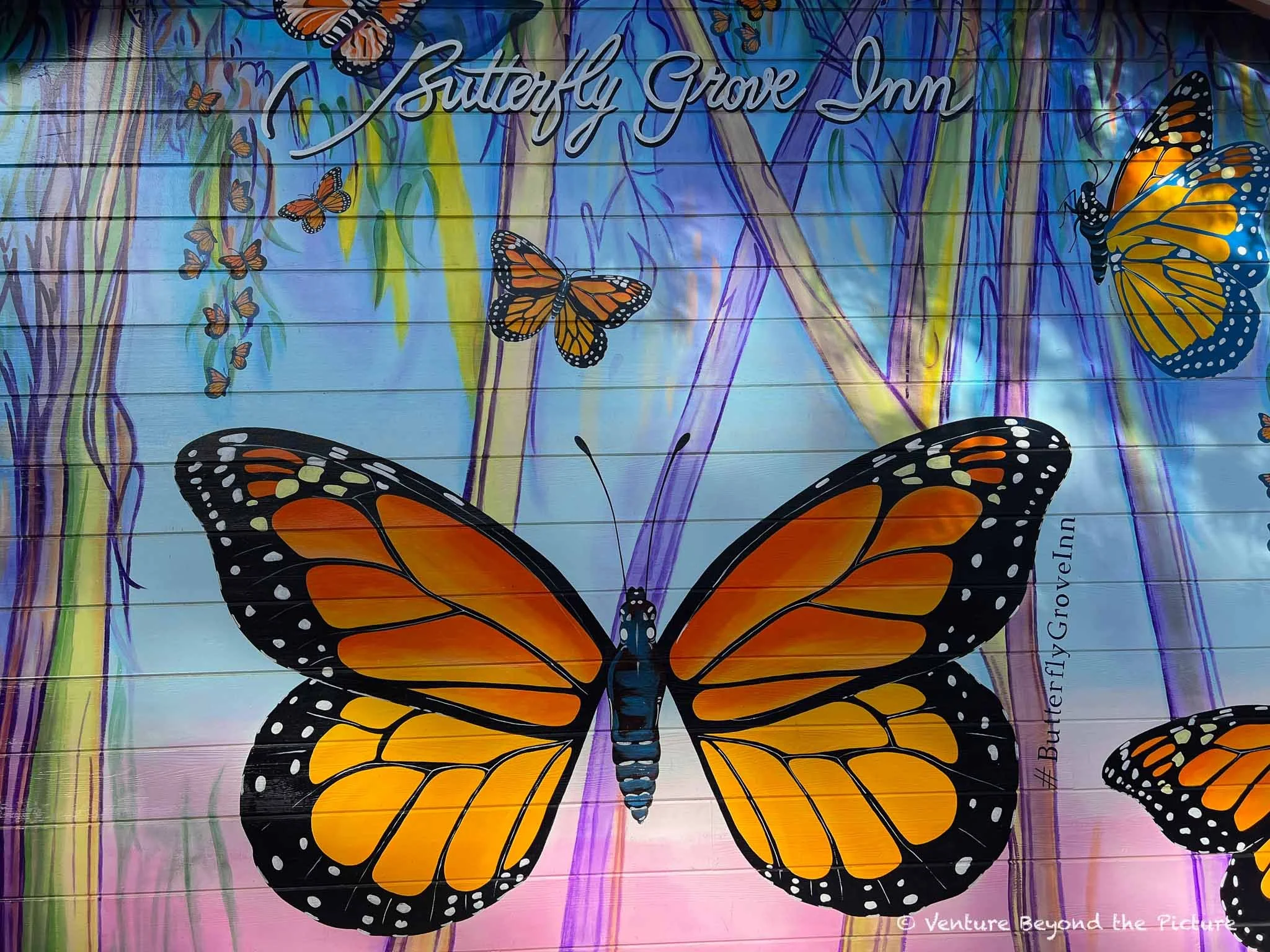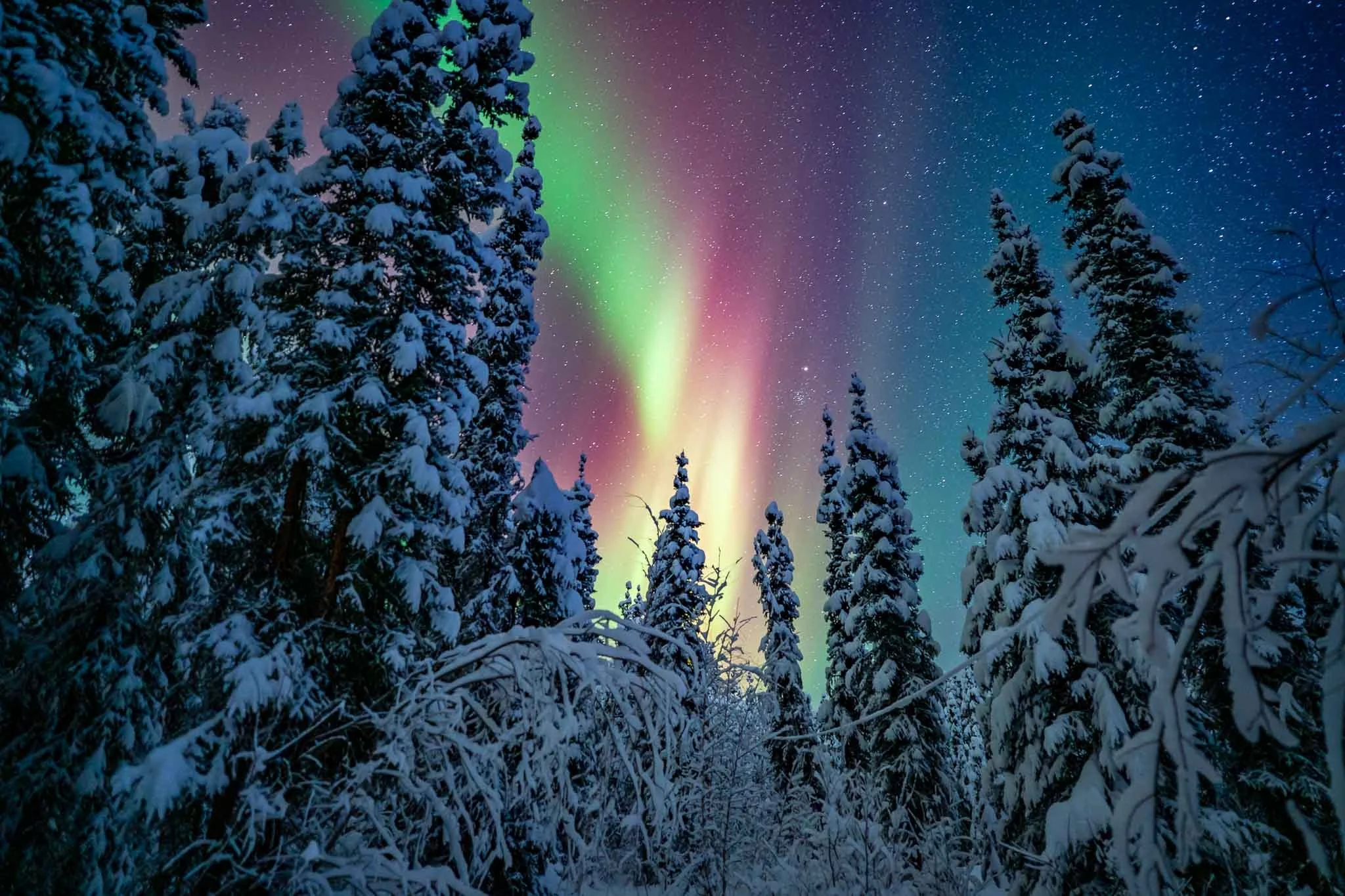Monarch Butterfly Migration In California: Best Places to Spot Overwintering Monarchs
Every year, starting in October, thousands of monarch butterflies embark on the journey of their lives, escaping freezing temperatures and seeking the shelter of the mild climate along the California coast. It’s a journey that none of the travelers have ever undertaken before—without a map, without a compass, and relying solely on their instincts. This repeated journey is made by a unique generation—a generation with lives so drastically different from those of their parents, grandparents, great-grandparents, and even great-great-grandparents. All of this happening simply because they were born in the fall.
Sounds fascinating? I think so too!
Let’s dive into why and how this occurs, the best places to spot thousands of overwintering monarchs, and how to support them so that this unique journey continues in the future.
>> This article focuses on the Western North American Monarch Butterfly population that resides west of the Rocky Mountains during the summer. Please note that there is also a separate population east of the Rocky Mountains. <<
In a Nutshell: Monarch Butterflies
A Threatened Species
Butterfly counts show that the monarch populations — both eastern and western — are threatened. Recent counts show a 90% drop from counts done 25 years ago. Reasons for the decline include the loss of coastal overwintering sites, the loss of milkweed along the migration corridors (read more about where and where not to plant milkweed below), and climate change intensifying the occurrence of droughts and extreme weather events.
Where Do Monarchs Come From?
The monarch butterfly (Danaus plexippus) ranges as far north as Canada, but it can't survive freezing winter temperatures. To endure, monarchs embark on a remarkable migration to overwintering sites—places cold enough to keep them in a state of rest, but not so harsh that they freeze, nor too warm to tempt them into unnecessary flight.
Monarchs west of the Rocky Mountains head for the central California coast, while those east of the Rockies make an incredible journey to the high mountains of central Mexico.
Along the way, they travel up to 2,000 miles, sometimes covering 100 miles a day, and can fly at altitudes as high as 10,000 feet.
What Makes Monarch Migration So Special?
In most migrating species, like birds and whales, the same individuals repeat the journey year after year. Monarchs, however, have never been to their overwintering destination before.
The butterflies embarking on this migration are several generations removed from those that made the trip last year. Except for Monarch butterflies born in late summer and early fall, a butterfly does only have a few weeks to grow from a caterpillar to a mature butterfly, reproduce and die.
Late summer and early fall then brings the birth of a unique generation of monarchs. Unlike their short-lived predecessors, these monarchs, known as the "super generation," live up to eight months. Triggered by shorter days and the lower angle of the sun, they delay sexual maturity and embark on their long journey. It’s as if a deep, instinctual map is embedded in their genes, guiding them across continents to places they've never seen.
Where Do They Go?
In the 1850s, Australian eucalyptus trees were introduced to the U.S., and these towering imports changed the landscape of monarch migration. Eucalyptus trees provide ideal shelter for monarchs to cluster in, and their winter blooms offer a convenient nectar source. As a result, monarchs now cluster in eucalyptus groves along the California coast.
Once they arrive, monarchs form large, protective clusters, resembling lifeless leaves clinging to the trees. Their flight muscles only function when temperatures rise above 55°F, so they rest quietly, waiting for the sun’s warmth to return. On warmer days, they take to the sky in search of nectar, refueling their energy stores before returning to their safe, clustered roosts before nightfall.
Where to Spot Them
Pacific Grove Monarch Butterfly Sanctuary
While the large crowds have yet to arrive, a few butterflies are already mingling together in the trees at the Pacific Grove Monarch Butterfly Sanctuary in mid-October.
The Pacific Grove Monarch Butterfly Sanctuary is the largest overwintering site for monarch butterflies in Monterey County, and a prime spot for observing monarchs between around mid October to February. A short path leads through the grove, where the pretty butterflies gather in the Eucalyptus trees.
Besides watching the monarchs, the sanctuary is also a lovely spot in the fall for enjoying some foliage colors.
Access & Fees
No fee is required for entering the sanctuary or for parking.
There is a small parking lot for the sanctuary on Ridge Road. If it's full, street parking can be found on streets adjacent to the Monarch Sanctuary, such as Lighthouse Avenue.
Opening Hours
Sunrise to sunset daily, including weekends and holidays.
Only closed in cases of extreme inclement weather, when high winds would make visitation unsafe.
Dogs
Dogs are not allowed in the sanctuary.
Links
The Pacific Grove Museum of Natural History provides the current monarch count at the grove and other helpful information on the butterflies & visiting the sanctuary.
This beautiful mural at the grove makes for a great photo op.
In a way, the clustering of these monarch butterflies reminds me of a bunch of grapes on a vine.
The red leaves, along with the lichens that hint at the foggy summers, provide a great photo opportunity and evoke autumn vibes in a place with little temperature variation between summer and winter.
Natural Bridges State Beach (Santa Cruz)
The Natural Bridges Monarch Trail, located at the Natural Bridges State Beach in Santa Cruz, is another wonderful place to witness monarch butterflies at their overwintering site. Like in other overwintering locations, eucalyptus trees along the trail provide them with shelter and food. The Monarch Grove at Natural Bridges has been designated a Natural Preserve, making it the only State Monarch Preserve in California. In winter 2023-2024, 10,000 monarch butterflies overwintered at the preserve.
You can learn more about the monarchs and other natural features at the visitor center, located in the main parking lot.
As the name suggests, Natural Bridges State Beach also features a beautiful beach, including tide pools (at low tide) to explore after observing the butterflies.
Access & Fees
Parking is available close to the trail & beach (at the visitor center & Cliff Drive).
There is a $10 vehicle day-use fee.
Opening Hours
Beach Hours: 8am to Sunset
Visitor Center: Wednesday - Sunday, 11 am to 4 pm
Dogs
Dogs are allowed in the parking lots and picnic areas.
They are NOT allowed on the beach and trails (except for ADA service animals).
Links
Monarch butterflies cluster together on this late afternoon in mid-November 2024.
While the star of the trail is the colorful monarch butterfly, there is more wildlife to discover. We were lucky to spot a great horned owl perched prominently in a eucalyptus tree at the end of the boardwalk.
Snowy white egrets feed in the shallow ocean water during low tide at Natural Bridges State Beach.
Pismo Beach Monarch Butterfly Grove
Monarch butterflies cluster in a Eucalyptus tree at the Pismo Beach Monarch Butterfly Grove in late October.
The Pismo Beach Monarch Butterfly Grove is another incredible location to view monarchs clustering and fluttering around. When we visited in late October, docents offered information and provided a chance to look through binoculars directly at the grove.
In the 2022-2023 season, the highest count in the grove reached 24,128 butterflies. While this may seem like a lot—and it certainly is when observing so many beautiful orange wings in the trees—it is still a sharp drop from the highest count of 230,000 individual butterflies recorded in the 1990-1991 season. Although butterfly counts fluctuate, the last decade has overall seen significantly fewer butterflies compared to the counts in the nineties (no earlier data was available). However, the last few years suggest an increase, so fingers crossed that this trend continues!
Access & Fees
Free admission to the Monarch Butterfly Grove.
Parking is free in the designated lot near the grove, with additional street parking available nearby.
Opening Hours
The grove is open daily from dawn to dusk.
The Monarch Mercantile Trailer, operated by the Central Coast State Parks Association, is open year-round from 11 am to 4 pm (extended hours during butterfly season).
Dogs
Dogs are allowed at the grove but must be on a leash at all times.
Links
AllTrails: Monarch Butterfly Grove and the Meadow Creek Trail (the latter is a nice extension of the walk after exploring the butterfly grove)
How many butterflies did I capture in this picture? There are more than it appears at first glance. Even though they have different colors, they blend in remarkably well with the eucalyptus leaves.
Other Locations
While your best chances of seeing monarch butterflies in large numbers are at key overwintering sites like the Monarch Grove Sanctuary, Natural Bridges State Park, and Pismo Beach, monarchs can also be spotted along much of the Southern and Central California coast, and even up to the Northern California Coast in the San Francisco Bay Area. They generally seek sheltered areas with trees to cluster in, and you might even come across a few fluttering around in more unexpected locations during their migration.
Other good locations to spot them clustering include the following:
Fort Baker and the Presidio in the San Francisco Bay Area.
Ellwood Mesa Open Space & Sperling Preserve in Goleta, near Santa Barbara.
Coronado Butterfly Preserve in Santa Barbara County.
Point Lobos State Natural Reserve near Carmel, which is also a great place to visit at any time of year. If you’re interested, check out my article on 5 Must-Do Activities For Nature Lovers at Point Lobos.
Further south, monarchs have been recorded migrating as far as Baja California in Mexico, although the majority of the western population stays along the California coast during the winter months.
Know Before You Go
Best Time to Visit
The best months to see monarchs clustering are between mid October and February, with the peak between November and January.
Any time of day is great depending on what you would like to experience:
Cooler temperatures (below 60 degrees) in the morning and evening encourage them to cluster tightly together.
They may be more active and flutter around more during the warmer hours of the day.
Binoculars & Photographing Monarch Butterflies
The butterflies often gather high in the trees, so bring binoculars.
If you're photographing, pack a telephoto lens to get close-up views and pictures. A 250mm or longer lens is ideal.
Camera settings
Aim for a fast shutter speed (1/1000s or faster) to capture sharp images of fluttering wings.
Choose an aperture around f/5.6–f/8 to balance depth of field and light.
Increase the ISO to allow for a faster shutter speed and a smaller aperture, without introducing too much graininess (noise usually becomes more noticeable between ISO 800 and 1600).
Early mornings or around sunset are great times to photograph, as these periods offer softer lighting conditions and a higher chance of butterflies clustering together.
Depending on lighting conditions, direction, and vegetation, these ideal settings may not be fully achievable without compromise. Aim for these values, keep in mind their purpose, but be flexible if conditions require adjustments.
Leave No Trace
Be mindful of where you step—monarchs sometimes rest on the ground, blending in with leaves. Tread carefully to protect the fragile butterflies.
How to Support Monarchs
Are Monarch Caterpillars Picky Eaters?
Milkweed plants, the common name for various plants in the genus Asclepias, are the only plants where monarch butterflies lay their eggs and the sole food source for monarch caterpillars.
This is due to a special relationship: milkweed produces toxins that are poisonous to most animals but not to monarchs. Feeding on milkweed gives monarch caterpillars a strong defense against predator by making them a less appealing food.
Plant Milkweed (except Right On the Coast)
Planting milkweed native to your area is essential to restoring lost habitat for monarch butterflies and their caterpillars.
Exception: In California, the Xerces Society advises against planting milkweed along the coast within 5 miles of overwintering grounds, and in higher elevation forests, where milkweed does not historically occur. Planting it in these areas may disrupt monarch behavior and harm populations.
Near overwintering sites, where planting milkweed is not advised, monarchs benefit from native nectaring flowers.
What Kind of Milkweed Do Monarchs Need?
Native Milkweed Species: Use milkweed species native to your area, as they are better adapted to local conditions and are less likely to disrupt ecosystems. For example:
Common Milkweed (Asclepias syriaca) in the Midwest and East.
Showy Milkweed (Asclepias speciosa) and Narrowleaf Milkweed (Asclepias fascicularis) in the West.
California has 15 native varieties, with showy milkweed and narrow-leaved milkweed being the most accessible.
Butterfly Milkweed (Asclepias tuberosa), which is widespread.
Avoid Tropical Milkweed (Asclepias curassavica): The Xerces Society advises against planting tropical milkweed, as it can disrupt monarch migration patterns and spread disease.
Links
More Adventures You Might be Interested In
Follow The Adventure
Latest on the Blog
Search
If you enjoy my content, please consider supporting my work
Your support helps me to pour my time and soul into Venture Beyond The Picture while keeping it clutter free. Every little bit means a lot to me — monetarily, but also as an appreciation of my work. I am beyond grateful for every contribution.















Monterey is located on the beautiful Pacific Coast in Central California. Along with a bunch of other picturesque towns, it sits on Monterey Bay, which is an absolute hotspot for marine life and coastal views. For anyone who loves nature and charming coastal towns, this is an incredible destination to visit. There are so many things to see and do: venture out into the bay on a whale-watching tour, spot sea otters and sea lions while paddling in a kayak, stroll along the coast in Monterey, hike at nearby Point Lobos, or watch one of those awe-inspiring California sunsets. If you are planning your outdoor-focused trip around Monterey, this is the post for you.